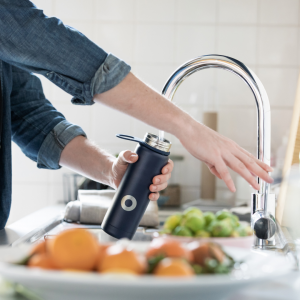Categories: Baby, Breastfeeding, Parenting, Pumping
November 12, 2021
It’s one of the biggest questions a breastfeeding or pumping mom has: “How do I increase my milk supply?” Here you’ll find tips to boost your supply and get more milk.
Top tips to Increase Milk Supply
Skin-to-skin contact
It is incredibly beneficial to have skin-to-skin contact, especially after baby is born. According to the World Health Organization (WHO) skin-to-skin contact helps newborns begin to breastfeed. Babies who have skin-to-skin contact shortly after birth have a higher likelihood of exclusively breastfeeding for six months. The benefits of skin-to-skin contact go beyond birth as well. Snuggling with your little one promotes the release of hormones such as oxytocin, prolactin, and endorphins in you – which help stimulate and promote lactation.
Breastfeed as often as possible
Breastmilk relies on supply and demand. The more you nurse your baby and remove milk, the more breastmilk your body will produce. Cluster feedings are a baby’s natural form of sending a signal to the body to increase milk production. Instead of giving baby a pacifier, breastfeed more frequently, even its just for comfort. Go ahead, let your baby use you as a pacifier. All hours of the day and night. Literally.
Embrace night feedings
This may not be exactly what you were hoping for as a sleep-deprived new parent, but it is normal for young babies to wake throughout the night. Night feedings are normal and important to establishing and maintaining a good milk supply, especially in the beginning. With prolactin levels being higher at night, these night feedings send an even stronger message to your body to boost supply. The La Leche League notes that breastfeeding at night can also help you and your baby fall back to sleep faster.
Feed on both sides at each feeding
Just as you do when you use a double electric breast pump, breastfeeding on both sides sends a signal to your body that milk is needed. During a feeding, start on one side. When baby is satisfied, offer the other side too. This can help to keep younger babies awake and alert while eating, which further stimulates milk production. But, don’t fret! Some babies only nurse from one side for each feeding session.
Catch milk on the other side
Let-down, when milk is released as baby starts sucking, happens on both sides. While many people wear nursing pads to prevent the common “leak” on the other side, you can use the let-down reflex to your advantage. By using a product like the Haakaa Manual Pump, you can catch the let-down (and more!) when you are nursing your baby. Simply suction it to your breast and let natural suction do its thing. There is zero assembly, it’s 100% food grade silicone, and easy to attach. This is a great way to get some extra milk.
Check baby’s latch
If a baby is not latching correctly, this can negatively impact milk supply. Poor milk removal due to an ineffective latch sends the incorrect signal to the body, reducing the amount of milk being produced. There can be a number of reasons baby isn’t latching correctly. Speak with your pediatrician or lactation consultant to help get to the root of the problem. In the meantime, use your breast pump to ensure breasts are emptied and milk production is stimulated.
Utilize “hands-on” pumping
Using your hands when you pump is a popular trick among the medical field to express more milk. It combines using breast massage techniques for compression, with the suction of an electric breast pump to get even more milk during a pumping session. A Stanford Medicine study proved that moms who utilize hands-on pumping expressed more milk each week than those who didn’t use hand compressions. Follow their detailed instructions on how to hands-on pump.
Power pumping
Power pumping mimics a cluster feeding baby. It involves pumping frequently in a short amount of time to help stimulate milk production. The general rule is: pump for 20 minutes, rest for 10 minutes, pump for 10 minutes, rest for 10 minutes, pump for 10 minutes. Give yourself a full hour to complete a power pumping session. It’s a relatively “quick fix,” with many seeing results in three to seven days of daily power pumping sessions.
Make sure breast shields are the correct size
Having an ill-fitting breast flange or shield can hinder milk supply. Too tight, and it can restrict milk flow. Too loose, and it may not stimulate correctly. Either way can cause damage to the nipple, creating further supply issues. Use this guide for instructions on how to measure your flange size.
Check your pump parts
Valve tears, tubing issues, and collection kit assembly can all make a difference in pump performance, which in turn, can impact how much milk you pump. Replace pump parts based on the manufacturers recommendations and be on the lookout for these top 10 suction issues.
Less stress, more sleep
You might be thinking, “Yeah, right. I have a new baby. That means more stress and less sleep.” To a certain extent, that is true. However, there are ways to reduce stress and improve rest, even during this transitional period in your family’s life. Knowing that stress can negatively affect let-down, it’s worth finding ways to reduce anxiety and increase rest. Drink some tea, practice deep breathing or meditation, treat yourself, reach out to your support system, take up the grandparents on that offer to watch the baby, retreat to a quiet space, forgo those chores during naps and bedtime to catch up on sleep. If things still seem overwhelming, reach out to your healthcare provider for additional options and coping mechanisms.
Stay hydrated
Considering breastmilk’s general composition is 87% water, and babies drink anywhere from 19 to 30 ounces of milk per day, it’s no wonder lactating parents need to up their fluid intake while nursing and pumping. Keep a water bottle handy all day or drink a glass of water every time your baby nurses.
Fuel your body
It’s especially important to maintain a balanced diet while breastfeeding. The food you eat can directly impact energy levels, milk supply, and nutrient composition. A healthy mix of whole grains, lean protein, eggs, legumes, leafy greens, sweet potatoes, nuts, and seeds will provide the nutrients needed to fuel your body and supply. Many moms swear by the oatmeal, flaxseed, and brewer’s yeast trio that can be found in snacks, like these lactation cookie bites and bars. Remember, breastfeeding or pumping may burn as many as 500-600 calories per day. Make up for those calories with wholesome foods and leave extreme dieting for weight loss out of the equation.
Want more tips? Try reading Making More Milk: The Breastfeeding Guide to Increasing Your Milk Production by Lisa Marasco & Diana West. It comes highly recommended by IBCLCs, CLCs, speakers, and researchers.
A note about herbs and supplements
There are countless herbs and supplements that claim to increase milk supply. Many of these have potential side effects. It is important to talk to your doctor or lactation consultant to decide what is safe for you in your situation.
A supply dip, and how this mom overcame it
This story from one of our moms at Acelleron proves that even when you notice a dip in supply, with a little effort and a lot of determination, you can still meet your breastfeeding goals.

“As a first-time mom, I was so lucky to have my breastfeeding journey start off perfectly. My baby latched immediately in the hospital, my milk came in like clockwork, and I never experienced pain or soreness. Sounds like a dream, right?
So, imagine my shock when my milk supply plummeted at around 9-months postpartum. Suddenly I was pumping less than my baby was drinking at daycare, and my freezer-stash was dwindling. I was riddled with anxiety about making it to my goal of 1-year exclusively breastfeeding and filled with dread at the thought of weaning. I knew I had to get serious about saving my supply, and so my breast pump became my best friend.
While my baby was sleeping through the night, I was waking up at 2:30 AM for a power-pumping session. I was drinking more water than I ever thought possible. I was heating warm cloths and researching massage techniques for breast tissue for milk letdown stimulation. After about two weeks of pumping and nursing around the clock, my supply recovered, and I felt the waves of relief wash over me.
Please know that if you are going through something similar, you do not have to give up on breastfeeding. This is your reminder that us moms are resilient. Breastfeeding is hard, but we can do hard things. Our breastfeeding goals are worth fighting for.”
-Ashley M.
*This post contains affiliate links, which means Acelleron may receive a commission if you make a purchase using these links.




